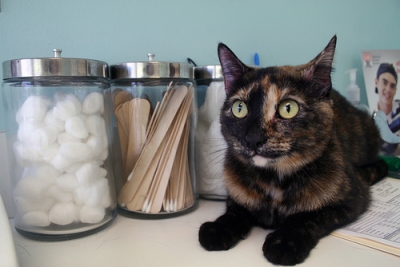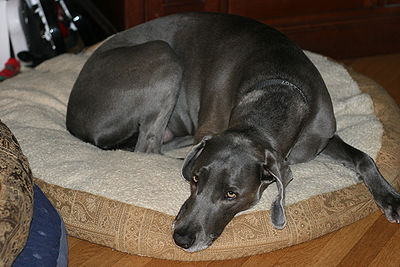
To explain, most all carbohydrates when eaten are converted into glucose. Glucose then circulates in the blood stream, entering the body’s cells to be used as energy.
The pancreas produces the hormone, insulin, which allows glucose into the cells. The pancreas of a diabetic dog or cat does not produce enough insulin. When blood levels of glucose are high, the glucose is excreted in the urine.
Diabetes usually occurs, but is not limited to, pets 5-7 years old. Dogs most susceptible are Dachshunds, Miniature Schnauzers, Poodles and West Highland White Terriers. While cats of both sexes can be affected, diabetes is seen mainly in female dogs.
Symptoms to look for are increases in thirst, urination and appetite, weakness, rapid weight loss, depression.
The good news is that while not curable, diabetes can be controlled and your pet can live a normal life if you follow a plan.
Diabetes can be easily diagnosed with a fasting blood test at your veterinarian’s office.
Treating diabetes begins with keeping your pet’s weight normal. Obese pets have much more tendency to develop the disease. Make sure your pet is exercising enough – proper exercise avoids many illnesses.
Administering insulin keeps diabetes under control. As each pet is an individual, determining the dose of insulin should be done initially under observation in an animal hospital. This could mean several days of monitoring your pet in the hospital. Once the dose is set, your pet will need to continue the treatment plan for the rest of its life. This means insulin injections daily as recommended by your vet.
Strict feeding programs have to be followed for your pet. Your vet will give you feeding instructions which can include dividing the feedings into 3-4 times daily. Your vet will tell you when to administer the insulin and will instruct you on how to inject it. Your vet will also tell you when to feed your pet. See more: Diets for Pets with Diabetes
Cats usually do better on low carbohydrates, high protein diets. High fiber diets help control weight for dogs. However if your pet is underweight, it will need a higher calorie diet. Your vet will advise you.
It’s very important to monitor your pet’s insulin level. Your vet will advise you about using urine test strips or a glucose meter and how often to check. Keep an accurate record of all readings along with time and date so you can report them to your vet.
A common complication is hypoglycemic shock from administering too much insulin. This will usually occur 3-4 hours after an insulin injection. Your pet becomes weak, listless or unresponsive. This is a medical emergency and you must take your pet to your veterinarian or a veterinary hospital immediately. Ask your vet before such an emergency occurs if there is anything you can do on the way to the hospital to help your pet.
Pets with diabetes are more susceptible to urinary tract infections. If you see blood in the urine or your pet strains to urinate, a veterinary examination should be done. See more: Urinary tract problems
Because your pet needs to be checked regularly by your veterinarian, it’s important to have a good relationship with him/her. It’s important for your vet to understand your feelings and to be empathetic. Things to consider – is your vet or an emergency clinic available close by in case of emergency? Ask for and keep an emergency telephone number handy at all times. Is your vet available to patiently answer all questions you may have?
If you follow your veterinarian’s instructions and include regular checkups, your pet can live a normal, healthy, happy life.
Related articles:



